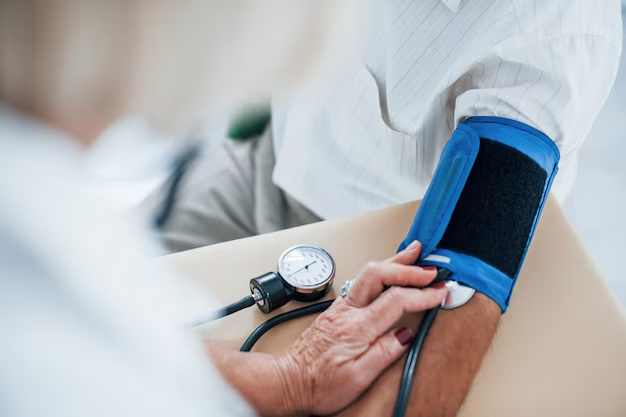Understanding Hypertension: What Blood Pressure Readings Mean You Have High Blood Pressure
Managing blood pressure is a crucial element of maintaining overall health and preventing complications such as heart disease and stroke. But how do you know when your blood pressure is considered hypertensive? Let's dig into the numbers and what they mean for you.
What Numbers Indicate Hypertension?
Hypertension, or high blood pressure, is typically diagnosed when a person’s blood pressure is consistently higher than 130/80 mmHg. Here’s a closer look at what these numbers signify:
- Systolic Pressure: This is the first number and indicates the pressure in your arteries when your heart beats. For most adults, a systolic reading of 130 mmHg or higher is considered hypertensive.
- Diastolic Pressure: The second number reflects the pressure in your arteries when your heart rests between beats. A diastolic reading of 80 mmHg or higher can also be a marker for hypertension.
Regularly monitoring your blood pressure can help in early detection and management of hypertension. Always consult a healthcare professional to assess your individual risk factors and how they interact with your lifestyle choices.
The Risks of Ignoring Hypertension
High blood pressure is often referred to as the "silent killer" because it frequently presents with no symptoms yet can lead to severe health issues if left unchecked. These can include:
- Heart attacks
- Stroke
- Kidney disease
- Vision loss
Moreover, there’s a significant financial aspect to managing a chronic condition like hypertension. From medication costs to potential hospitalization, the expenses can escalate.
Transitioning to Financial Health: Balancing Medical and Monetary Concerns
Living with hypertension doesn't just take a toll on health—it can also impact your finances. Here are ways to alleviate some of the financial burdens:
Explore Government Aid Programs
The Affordable Care Act (ACA) and Medicaid can help those with limited income access necessary treatments at no cost or at a reduced price. Eligibility varies by state and income level.
Financial Assistance
For those struggling to keep up with medical bills due to hypertension:
- State Health Insurance Assistance Programs (SHIP) provide free counseling and assistance.
- Nonprofit organizations might offer support for medication assistance.
Debt Relief Options
Consider speaking to a financial advisor if medical bills are becoming overwhelming. Debt consolidation can simplify payments and potentially lower interest rates.
Credit Card Solutions
Check if your credit card offers healthcare financing solutions. Some cards provide 0% interest on medical expenses for a specified period.
Educational Opportunities
Knowledge is power! Understanding lifestyle changes to manage blood pressure more effectively is key.
- Look for community educational programs about nutrition and exercise.
- Some health institutions offer free workshops about hypertension management.
In essence, managing your blood pressure shouldn't be just about medication but also involves engaging with financial and educational resources that can aid you in leading a healthier life. Don’t hesitate to reach out for assistance—many pathways exist to help you stay healthy without breaking the bank.
Explore These Resources:
📋 Government Aid Programs
- Affordable Care Act (ACA)
- Medicaid
💸 Financial Assistance
- State Health Insurance Assistance Programs (SHIP)
- Nonprofit medication support
📈 Debt Relief Options
- Debt consolidation services
💳 Credit Card Solutions
- Cards with 0% interest on medical expenses
🎓 Educational Opportunities
- Community health workshops
- Nutritional education programs
Staying informed and exploring these avenues may not only improve your health outcomes but also provide financial peace of mind. Keep your well-being in check, both physically and financially!

Related Topics
- a 66 Year Old Female With a History Of Hypertension
- Are Eggs Bad For Hypertension
- Are Eggs Good For Hypertension
- Are Endocrine Disorders Causing Hypertension Rare
- Can Adderall Cause Hypertension
- Can Alcohol Cause Hypertension
- Can Allergies Cause Hypertension
- Can Anemci People Get Hypertension
- Can Anemia Cause Hypertension
- Can Antibiotics Cause Hypertension